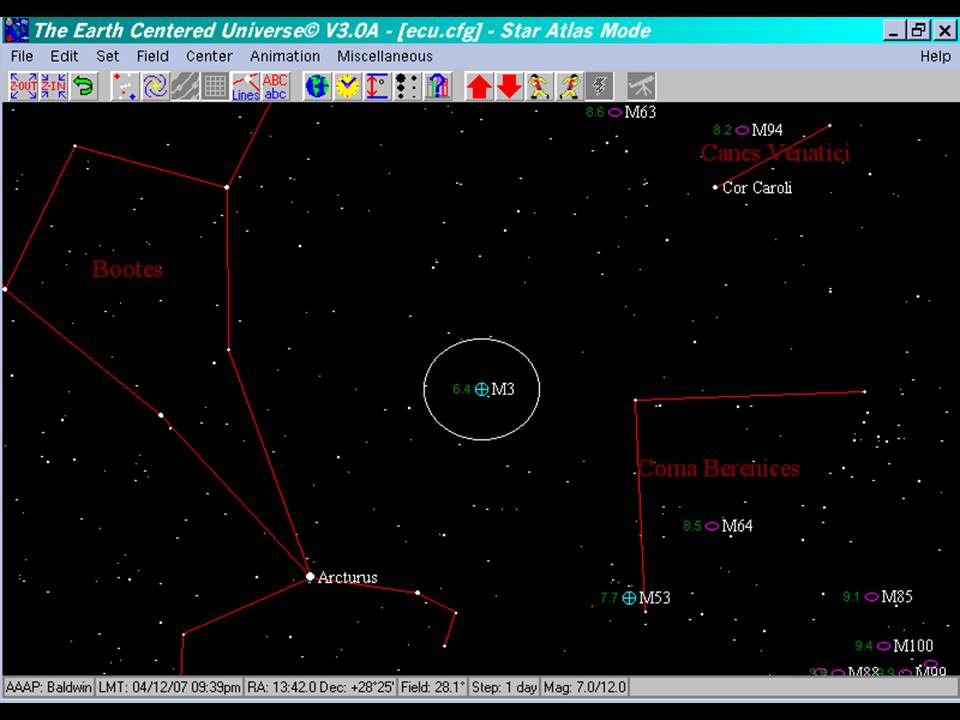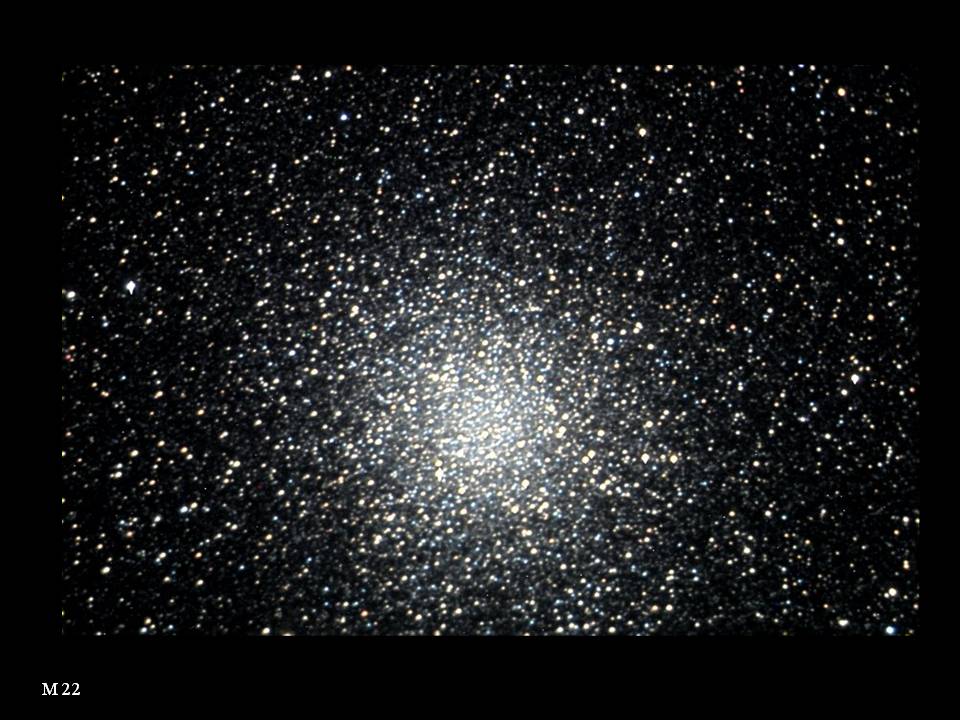
"Observing the Webb Society Globular Clusters"
With volume-three of the Webb Society's Deep-Sky Observers Handbook, it lists a number of bright globular star clusters visible with small amateur telescopes.
There are a total of 62 globular clusters listed in the Webb Society handbook.
Some are easy, some are difficult!
All coordinates are for year 2000.
It took me several years, but I finally 'sketched' or 'video-captured' my way thru the list.
For detailed descriptions and additional sketches, see the Webb Society handbook, V3 "Open and Globular clusters".
Globular Star Clusters are physically related groups of stars held together by mutual gravitational attraction.
They consist of large concentrations of stars from several 100 thousand up to a million stars tightly bound together in a relatively small area,
spread over a volume of several tens to about 200 light years in diameter.
As they formed together, the stars in a cluster are all of similar age, and about the same distance from us.

They originate from large cosmic gas and dust clouds in our Milky Way galaxy that slowly collapse.
After star clusters form, they continue to orbit our galaxy scattered throughout its arms and disk.
Globular Clusters are generally found in the outer halo around the galaxy's central disk.
Of the 151 known clusters, 138 (91.4 percent) are concentrated around the galactic center of our Milky-Way galaxy in the Sagittarius / Scorpius region of the sky.

Studies of globular clusters shows that they are much lower in heavy element abundance than stars such as the Sun that form in the disks of galaxies.
Globular clusters are believed to be very old and consist of earlier generations of stars which have formed from the primordial matter present in our galaxy just after its formation.
A few examples of Globular Star Clusters:
M3

M3 is located in the spring constellation of Canes Venatici, 'The Hunting Dogs'.
and is one of the most outstanding globular clusters, containing an estimated half million stars. At a distance of about 33,900 light years, it is further away than the center of our Galaxy.

The cluster is about 180 - 200 light years in area, with a compressed, dense core measuring about
11 light years in diameter. The age of globular cluster M3 has been estimated at 20 billion years.
Discovered 1764, and first resolved into stars in 1784.
M13

M13 is located in the late spring/early summer constellation of Hercules, 'The Hero'.
The `Great Hercules Cluster', is one of the most prominent and best known globulars of the Northern celestial hemisphere. Visible to the naked-eye under dark skies.
At its distance of 25,100 light years, it has a diameter of about 145 light years.

M13 contains several 100,000 stars. Towards its center, stars are about 500 times more concentrated than in our local solar neighborhood.
The age of M13 has been determined as 14 billion years
Discovered 1714, and first resolved into stars in 1764.
M22

M22 is located in the summer constellation of Sagittarius, 'The Archer'.
One of the first globular clusters discovered.
At 10,400 light years, it is one of the nearer globular clusters. At this distance, its diameter covers an area of the sky slightly larger than that of the Full Moon. It actually has a diameter of about 97 light years and contains over 70,000 stars.

It is visible to the naked eye for observers, is brighter than the Hercules globular cluster M13 and
out-shined only by the two bright southern globulars, which makes M22 the third brightest globular in the sky.
Discovered 1665, and first resolved into stars in 1764.
Photo Credits:
NGC5139 (Omega) - Adam Block/NOAO/AURA/NSF
M101 - Adam Block/NOAO/AURA/NSF
M3 - Elliot Gellman and Duke Creighton/Adam Block/NOAO/AURA/NSF
M13 - Johannes Tan/Adam Block/NOAO/AURA/NSF
M22 - Ron Tamler/Adam Block/NOAO/AURA/NSF
Advanced Observing Program: National Optical Astronomy Observatory - Kitt Peak Az http://www.noao.edu/outreach/aop/observers/bestof.html
"Earth Centered Universe" by David Lane http://www.nova-astro.com/
Neat links:
Webb Society
Larry's home webportal
You may E-mail me at:
lsmch@comcast.net
This is it. Hope you enjoyed the visit. Come again soon!

